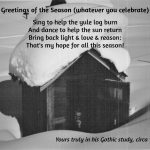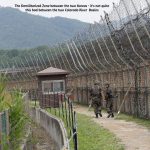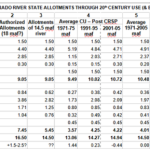Down on the Ground Among Aspens
A lot of ‘Indian Summer,’ when you just have to be outside, gets invested in the woodpile. Most of what passes for my adult life, I’ve burned quite a bit of wood, using it for anywhere from 20 to 100 percent of the heat in the motley of places I’ve lived.
The 100 percent wood heat was for a 16×20 cabin up in Gothic my family and I lived in as winter caretakers for the Rocky Mountain Biological Lab, quite a few years ago. That was toward the ‘living rough’ end of the civilization spectrum; we had electricity most of the time, but we heated entirely with wood, and our plumbing was a spring about 50 yards from the cabin and an outhouse about fifteen yards from the front door. Four of the best years of my life.
The 25 percent wood heat is what we do today, where we live in Gunnison. The house didn’t have a wood stove when we moved in, which didn’t bother my partner Maryo, but left me feeling a little – well, naked; I hadn’t lived in a house without a wood stove since I’d come to the mountains.
Then one Sunday morning, the gas furnace failed to come on, and we had a cold day and night until we could roust a repairman on Monday. After that we installed a beautiful EPA-sanctioned woodburner with a glass front.
Now Maryo loves it as much I do, if not more, all the way from gathering, splitting and stacking the wood to building and tending the fire. But we only use it twice a day: in the morning to raise the house temperature from the overnight low setting to the day setting before turning the task over to the furnace; then again in the evening, when we drink a drink and eat dinner on TV trays, watching the fire with the furnace off. And we’re ready for the next time the furnace decides to not come on.
I’ll also confess I’ve burned coal too, in the various stoves whose lives I’ve shared, back in the days when we didn’t know better. That was in Crested Butte, when we could still get lump coal from the North Fork, and my newspaper office was the front half of a big uninsulated former bar. I was heating with an antique coal burner; if I got its potbelly glowing a nice warm red, it kept the big old room warm for about eight feet in any direction. Central heating. And again – years I treasure: I wonder about the fact that some of the best years of my life have also involved getting up in a frigid room and starting the fire before starting the coffee. Physical comfort doesn’t seem to be a primary factor in my quality of life.
But I’m digressing again. Woodgathering.
I remember seeing a short video of Ed Abbey revisiting Arches National Monument a long time after his ‘Desert Solitaire’ years there, in a pink Cadillac, and seeing a sign that said ‘No Woodgathering.’ He misread it as ‘No Woolgathering.’ He woolgathered on that for a moment, and his woolgathering years there – then drove off.
A woolgatherer was basically a kid sent out in sheep country to wander about collecting tufts of wool that had caught on bushes as the sheep grazed; the term became associated with daydreaming, absentmindedly contemplating the universe and not getting much done.
When you’re the age of my partner Maryo and me, woodgathering is best when mixed liberally with woolgathering. Woodgathering is pretty good exercise, which one needs at our age, but it needs to be properly and deliberately paced.
I find I’d rather go woodgathering than hiking, partly because hiking is starting to feel like an indulgence that might not be all that healthy, at least for the planet: it usually involves getting into a vehicle and driving to a trailhead, which is an increasingly guilt-ridden act. Second, hiking isn’t really getting into the woods, the mountains; it’s just walking through them, mostly looking down at the trail to avoid stumbling.
For woodgathering, you still have to use a vehicle to get there and back, but the vehicle is multi-tasking; and if you are psychologically constipated by a genetic heritage of Protestantism, as we both are, the exercise involved in woodgathering is sanctified by the fact that it is also meaningful work.
When Maryo and I go woodgathering, we are looking for two things: aspen and a view. The aspen is for the woodgathering; the view is for the woolgathering. We cut and burn only aspen; its quick hot fire works well for our limited uses, and we don’t have to clean the stove pipe so often.
When Maryo and I go out for aspen, we don’t even take a chain saw – too noisy. These tall quiet places were the libraries when all the books were still trees, and deserve the same quiet reverence. Instead we take bow saws and our old Subaru Brat, a quaint little vehicle but it holds as much wood as we want to cut in a morning.
The bow saw limits the size of tree we can cut to about 10 inches in diameter, but we stick mostly to downed or dead standing aspens in the 4-8 inch range; we cut them into 8-10 foot lengths which we either carry or flip end over end down to the road and the trucklet.
And after each tree is cut and loaded, we woolgather. Sit down on a convenient log or the cutbank at the road, drink a little water or cold coffee, and contemplate life from the library of the aspen grove, looking west and north from where we are to the Ragged Mountains, the Fossils, the Collegiates on the Continental Divide.
But a lot of the woolgathering is invested in watching the aspens themselves – the way they welcome the light, play with it rather than blocking it like the spruce and fir up the road. And the layer of leaf-gold they lay down every year to rot and invite in the grasses or ferns. Are there finer places on earth than aspen groves? An aspen grove, to me, is a place where you can temporarily and unconditionally believe in the planet’s life project; a dead standing aspen from which all the protective bark has dried and fallen away, leaving the tree naked before the universe, is consummate beauty – its white and tan and gold and gray streaked wood a wordless poem to the place where it grew. Something to remember when I put a piece of it in the stove in January.
There are certainly more exciting places, more impressive and magnificent places than an aspen grove. But it is hard to think of places both larger than oneself that are nonetheless, somehow, scaled to humankind. This is literally implicit in the aspen’s biological Latinate name: Populus tremuloides. Populus, populous, populace, poplar, popular, people – all of these words have a common root, the Latin popul- plus a variety of suffixes, for all those directions in which we’ve taken the word. Under the aspens, it feels like an honor to have that common root with them.
But Populus tremuloides? The trembling or tremulous ‘popple-people.’ ‘Tremuloides’ comes from the flattened stem of the aspen leaf, which enables the leaves to go into motion with breezes hardly felt by humans. But why tremuloides, trembling, tremulous, suggesting fear, apprehension, as in Trumpus tremuloides, fearing everything. Maybe that works on a cold and cloudy day in October. But even then, when a hillside in the autumn change to gold seems to emanate its own source of light, the aspens seem to be ‘no fear’ trees.
Why not Populous terpsichorides – ‘popple-people delighting in dance’? Well, too late to change it, I suppose.
Driving home with a trucklet full of already-dead aspen, we are more tired than we would be after a hike, but somehow more fulfilled. And grateful: to the aspen grove for what we hope it doesn’t mind sharing. Grateful too that we only need a couple cords, rather than the five or six it would take to heat our home entirely with wood but can instead coast on the planet’s remaining burps of natural gas. (Now where did I leave that solar energy estimate for the house….)
Out among aspen, I wonder if, in the conservation of matter and energy through its cycle of oxidation through rot or burning and resurrection in new carbon life forms – if the resurrection really is random, or if there might be the Hindu ascendance through successively more perfect forms, to where life lived modestly, creatively and well might eventually lead one to an aspen grove as one of life’s higher forms. Thoughts that come unbidden, out among aspen.
***
George Sibley gathers wood and wool in Gunnison.
Download (in PDF) Down on the Ground Among Aspens by George Sibley (Copyright George Sibley)



